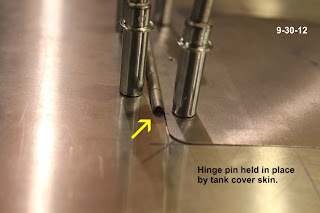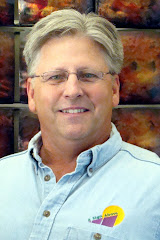click on image to enlarge
This next photo shows the F2 bulkhead from the rear. You can see that I used a larger tube to protect the brake line where it comes through the F2 bulkhead and 3 layers of heat shrink to protect it from the upper longeron hole it goes through. There is little to no movement at the point it goes through the longeron, but I wanted some protection from rubbing anyway.
I have been working on my fuel system also and decided on installing two pumps in series. To minimize vapor lock situations, I also decided to install them on the back side of the firewall where they will remain cooler. Instead of mounting them directly on the firewall, I created a mounting bracket from some scrap .062 aluminum I had laying around. I just bent a 90 degree flange as a mounting point. I drilled 3 holes in the lower engine mount cross angle for AN3 bolts and installed nut plates on the underside of the bracket flange so that it could be removed to work on or replace a pump. The photos below show this installation.
Up next is the gascolator installation and running the fuel lines through the firewall.






































